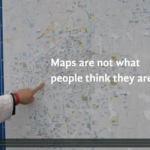
NATHAN HEINTZ
Systems Change Consultant
[s2If is_user_logged_in()]
Download PDF
[/s2If]
[s2If current_user_can(access_s2member_level1)]
[/s2If]
Case Study—In 2016 The Chicago Community Trust (“The Trust”), a local Chicago foundation, partnered with Roller Strategies (“Roller”), an international professional services firm, to deploy an innovative mixed-methods approach to community-driven social change on the South Side of Chicago. This partnership convened a diverse group of stakeholders representing a microcosm of the social system, and launched a project with the aim of developing resilient livelihoods for youth aged 18-26 in three specific South Side neighborhoods. Roller designed and facilitated a process through which the stakeholder group scoped, launched, piloted and prototyped community-driven initiatives. While innovative and successful by some metrics, the project had its challenges. The convening institutions and their staff were often perceived as “outsiders” and “experts” without intimate local knowledge...

